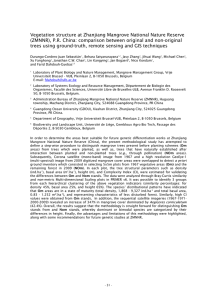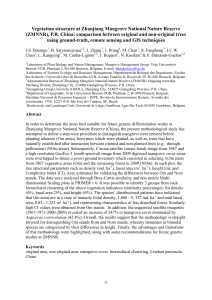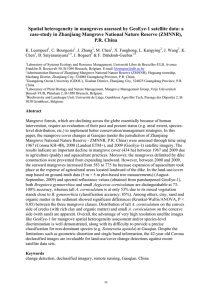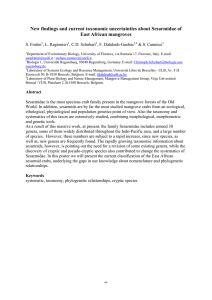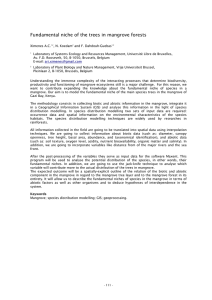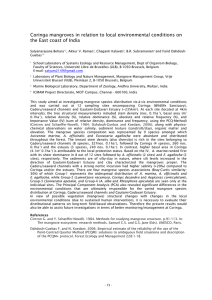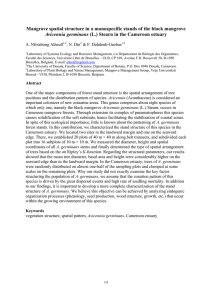Test assembly mechanisms of mangrove communities using geostatistical
advertisement
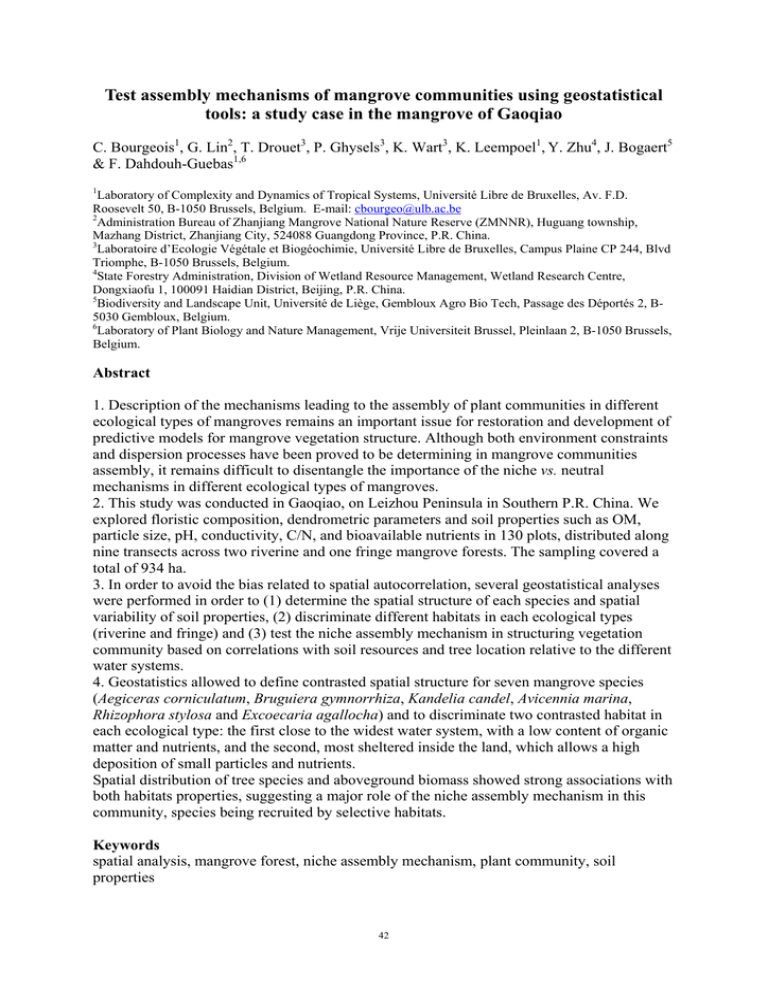
Test assembly mechanisms of mangrove communities using geostatistical tools: a study case in the mangrove of Gaoqiao C. Bourgeois1, G. Lin2, T. Drouet3, P. Ghysels3, K. Wart3, K. Leempoel1, Y. Zhu4, J. Bogaert5 & F. Dahdouh-Guebas1,6 1 Laboratory of Complexity and Dynamics of Tropical Systems, Université Libre de Bruxelles, Av. F.D. Roosevelt 50, B-1050 Brussels, Belgium. E-mail: cbourgeo@ulb.ac.be 2 Administration Bureau of Zhanjiang Mangrove National Nature Reserve (ZMNNR), Huguang township, Mazhang District, Zhanjiang City, 524088 Guangdong Province, P.R. China. 3 Laboratoire d’Ecologie Végétale et Biogéochimie, Université Libre de Bruxelles, Campus Plaine CP 244, Blvd Triomphe, B-1050 Brussels, Belgium. 4 State Forestry Administration, Division of Wetland Resource Management, Wetland Research Centre, Dongxiaofu 1, 100091 Haidian District, Beijing, P.R. China. 5 Biodiversity and Landscape Unit, Université de Liège, Gembloux Agro Bio Tech, Passage des Déportés 2, B5030 Gembloux, Belgium. 6 Laboratory of Plant Biology and Nature Management, Vrije Universiteit Brussel, Pleinlaan 2, B-1050 Brussels, Belgium. Abstract 1. Description of the mechanisms leading to the assembly of plant communities in different ecological types of mangroves remains an important issue for restoration and development of predictive models for mangrove vegetation structure. Although both environment constraints and dispersion processes have been proved to be determining in mangrove communities assembly, it remains difficult to disentangle the importance of the niche vs. neutral mechanisms in different ecological types of mangroves. 2. This study was conducted in Gaoqiao, on Leizhou Peninsula in Southern P.R. China. We explored floristic composition, dendrometric parameters and soil properties such as OM, particle size, pH, conductivity, C/N, and bioavailable nutrients in 130 plots, distributed along nine transects across two riverine and one fringe mangrove forests. The sampling covered a total of 934 ha. 3. In order to avoid the bias related to spatial autocorrelation, several geostatistical analyses were performed in order to (1) determine the spatial structure of each species and spatial variability of soil properties, (2) discriminate different habitats in each ecological types (riverine and fringe) and (3) test the niche assembly mechanism in structuring vegetation community based on correlations with soil resources and tree location relative to the different water systems. 4. Geostatistics allowed to define contrasted spatial structure for seven mangrove species (Aegiceras corniculatum, Bruguiera gymnorrhiza, Kandelia candel, Avicennia marina, Rhizophora stylosa and Excoecaria agallocha) and to discriminate two contrasted habitat in each ecological type: the first close to the widest water system, with a low content of organic matter and nutrients, and the second, most sheltered inside the land, which allows a high deposition of small particles and nutrients. Spatial distribution of tree species and aboveground biomass showed strong associations with both habitats properties, suggesting a major role of the niche assembly mechanism in this community, species being recruited by selective habitats. Keywords spatial analysis, mangrove forest, niche assembly mechanism, plant community, soil properties 42
